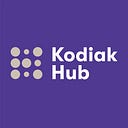What is ESG? How can it elevate your Supply Chain Management?

Supply Chain Management, as a domain, includes activities deeply entrenched in strategy, regulations and standards. Without these standards — and proper strategies for implementing them into daily supply chain activities — supply chain risks would materialize a lot more often than they do.
The ESG (Environmental, Social and Governance) criteria is no exception to this rule.
Conceptually, the ESG criteria serve as a guideline for environmentally friendly, socially acceptable, and ethically righteous supply chain activities; especially in the procurement, sourcing and supplier relationship management-related actions.

These criteria (Environmental, Social, and Governance) apply as much internally, as they do externally. Meaning, if ESG standards serve as a parameter during an organization’s monthly internal performance review, the same standards should be applied during a random supplier factory audit.
As a result of globalization and the outsourcing of labor, within globally functioning supply chains, traceability and transparency into supplier’s activity have become necessary to manage ESG related risks. This is why ESG must be the main focus when developing a procurement or sourcing strategy.
“The procurement function often has a handle on what takes place among Tier 1 suppliers (possibly also Tier 2). But for a globalized supplier base, with numerous subcontractors and sub-tier sourcing relationships, supply chains can often be very obscure” (Corporate Citizenship 2013).
Obscurity of supply chain networks has made the management of ESG related risks, the application of preventative guidelines/actions, and the response to manifested supplier-related risks a very complicated process.
Typical supply chain management strategies include supplier-compliance actions and review of compliance performance. This information is the building block for purchasing entities to ensure that suppliers are performing in line with ESG expectations.
“Such supplier monitoring is a transactional governance mechanism designed to provide buyer-firms with information that can help them manage supply chain risk and make strategic outsourcing decisions. However, it is not clear that buyer-firms are getting complete and accurate information from their supply chain monitors (e.g., Esbenshade, 2004; Heras-Saizarbitoria and Boiral, 2013; O’Rourke, 2002)” (harvard.edu 2015).
Participation from the supplier body is crucial in collecting reliable and quality data sets. Without quality supplier-related data, purchasing entities have a tough time working with the right suppliers. Subsequently, collaboration with the wrong suppliers could lead to unethical supplier actions, such as feeding back faulty data sets to the purchasing entity.
A real catch 22 of supply chain management, sustainability, and transparency.
What role does ESG play in optimizing Supply Chain Management?
ESG serves as guidelines by which supply chain management strategies should be built from bottom-line to top.
Gauging a supply chain’s ESG performance level would be relative to the organization’s wants and needs within environmental, social, and governance activities. Implementing an approach, as spoken about in last week’s post, of ethicality as a KPI could be a good start for measuring ESG performance.
Business performance — with respect to environmental, social, and governance concerns — has become one of the crucial criteria when investment companies evaluate a potential investment.
“ESG has become shorthand for investment methodologies that embrace ESG or sustainability factors as a means of helping to identify companies with superior business models. ESG factors offer portfolio managers added insight into the quality of a company’s management, culture, risk profile and other characteristics” (paxworld.com).
For that same vision of superiority and stability, multiple companies utilize the constructs — provided by the ESG criteria — to develop supply chain management strategies.

Take Nielsen for example, their entire Supply Chain Sustainability page focuses around how their actions and strategies are a commitment, promising positive global impact through, “managing the environmental, social, governance (ESG) and ethical impacts of our purchasing” (Nielsen).
Within their ‘Approach’ section of the page, they share their approach for managing ESG related risks, while depleting the chance for negative supply chain impacts. The three areas that they have delegated as main focuses are:
· Policies and Business processes: Working within preventative contexts, setting policies for governance during contractual activities. Build a level of commitment from the side of suppliers from the start.
· Supplier Engagement: Holding close relationships with suppliers to ensure that they’re being assessed thoroughly, based on ESG performance criteria. Pushing supplier performance with goal setting through the sourcing manager’s direct contact. Ensuring supplier development with organizational unification, by implementing supplier development plans by the guidelines of a Supplier Toolkit (complete with 150 performance indicators).
· Multi-Stakeholder Collaborations: Keeping stakeholders in the know, and working closely with various leadership organizations and coalitions focused on sustainable development.
Best put by their own copywriters: “Nielsen is not just aligning with global best practices, but helping shape them” (Nielsen).
Nielsen is surely building a reputation for itself, as a sustainable and responsible brand, willing to go that extra mile to secure their stakeholder’s satisfaction.
As stated by Pam Fitzpatrick, research analyst for Gartner, “A widely cited World Economic Forum report says that more than 25 percent of a company’s market value is attributed to its reputation.”
“So if a supply chain activity results in the violation of an environmental, product safety, labor or human rights regulation, you’ll likely pay twice: the fine for noncompliance and the steep drop in sales and funding for breaching the trust of consumers and investors” (Pettey 2016).
That’s a social and financial tax no company wants to get slammed with.
So there you have it:
1. A thorough introduction to ESG for those who didn’t know.
and
2. A framework for application for supply chain management professionals who are interested in enhancing their supply chain’s sustainability strategy.
The only people leaving the party without a goody bag is the unethical, unsustainable, and untrustworthy suppliers you’re about to cut out of your supply chain.
Until next week.
This publication is brought to you by author Sam Jenks, but also on part by Kodiak Rating — A Supplier Relationship Management SaaS functioning out of Stockholm, Sweden. Kodiak Community intends to challenge traditional business practices with innovative thinking and creation.
